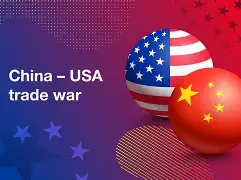Table of Contents
The United States and China are edging closer to a limited trade agreement that could ease some long-standing tensions between the world’s two largest economies. However, as negotiations gain momentum behind closed doors, a separate wave of escalating tariffs looms, raising concerns among businesses and economists about potential price shocks and renewed strain on global supply chains.
A Narrow Deal Within Reach
Senior trade officials from both nations have confirmed that talks have made “substantial progress” toward a targeted agreement focused on market access, intellectual property protections, and agriculture. The deal, which sources say could be finalized by the end of the month, is expected to restore some bilateral trade flows disrupted since the initial tariff battles began in 2018.
“We are encouraged by the movement on key issues,” U.S. Trade Representative Katherine Liu said on Tuesday. “Our objective remains clear: secure a fair and enforceable outcome for American workers and exporters.”
Chinese officials have echoed similar optimism, describing the talks as “constructive” and emphasizing mutual benefits in stabilizing relations.
New Tariffs Set to Take Effect
Despite signs of a thaw, the Biden administration is moving ahead with a new round of tariffs on Chinese imports—including electric vehicles, green energy equipment, and strategic tech components. The expanded duties, announced earlier this month, are set to begin rolling out in August and are designed to counter what the administration describes as “unfair industrial subsidies and dumping practices.”
The new measures will raise existing tariffs from 25% to as much as 100% on certain items. U.S. officials insist the tariffs are separate from the trade talks and are part of a broader national security and industrial competitiveness strategy.
“We will continue to defend critical supply chains and ensure a level playing field,” Commerce Secretary Gina Raymond said. “Any deal with China cannot compromise our long-term economic security.”
Business Community Faces Mixed Signals
The combination of a possible trade pact and tariff escalation has left the U.S. business community in a state of uncertainty. While many welcome progress toward reducing friction, the prospect of higher input costs is creating anxiety, particularly among manufacturers and import-heavy sectors.
“This deal may help soy farmers, but tech and auto firms are bracing for impact,” said Jordan Wexler, senior trade counsel at the National Association of Manufacturers. “We’re seeing a trade split where diplomacy and deterrence are running in parallel.”
Retailers, already managing tight margins due to post-pandemic inflation and shifting consumer behavior, warn that higher duties could lead to price hikes by the fourth quarter.
Global Markets React Cautiously
Financial markets have responded with modest volatility. The S&P 500 dipped slightly on Monday amid reports of the pending tariff implementation, while commodity markets adjusted to potential supply shifts in key export goods such as lithium batteries and solar panels.
Analysts caution that even a limited U.S.–China agreement, while welcome, may not be sufficient to ease macroeconomic pressures if tariff hikes proceed without delay.
“There’s a risk that the market sees a deal but feels the pain of tariffs anyway,” said Dr. Lena Ortiz, chief economist at Atlantic Macro Research. “This could be a case of short-term relief and long-term uncertainty.”
Trade experts say the scope of the agreement will be narrow, possibly limited to regulatory cooperation and sector-specific relief. Enforcement mechanisms and timelines remain under negotiation.
Meanwhile, U.S. Customs and Border Protection is preparing to implement the new tariff structure, and business lobbies are urging the administration to delay enforcement to allow for adjustment.
In Congress, bipartisan voices have expressed support for a firm approach to China, though some have called for greater consultation with industry leaders to avoid unintended economic fallout.
Whether the two-track strategy—combining engagement with deterrence—yields a sustainable outcome remains to be seen. For now, the U.S.–China trade relationship appears poised between diplomacy and disruption.



